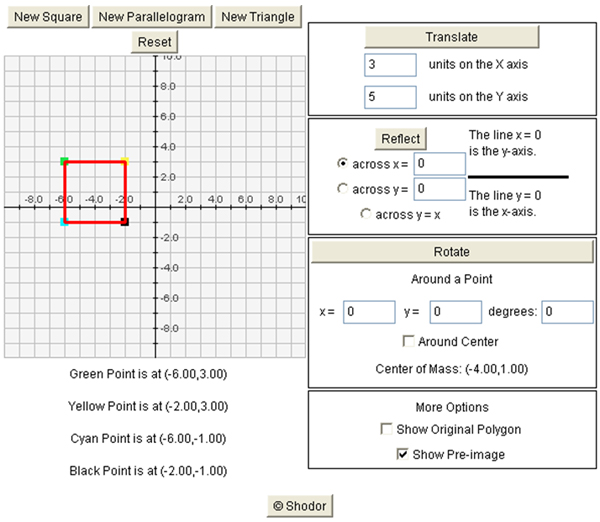
In this section, you will use an interactive sketch to investigate translations. Click on the following link to open the applet in a new tab/window.

This sketch allows you to investigate the changes in coordinates when a translation is applied to a geometric figure.
First, let’s investigate translations.
We can write the rule for translations in symbolic language.
Translation (x, y) → (x + a, y + b)
In general, how are the size and shape of a figure affected when a translation is applied to the figure?
Since the size and shape of figures are not affected by translations, we say translations are congruence transformations.